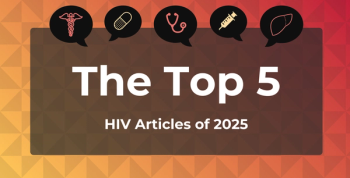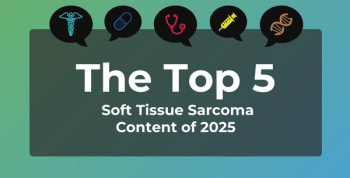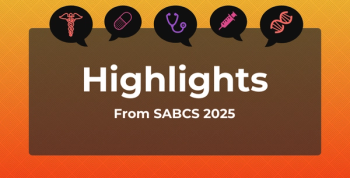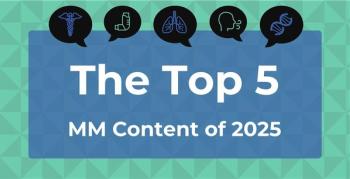
Nivolumab-Based First-Line Treatment Is Effective in Treating Hodgkin Lymphoma, Study Finds
Nivolumab-based first-line treatment is highly effective in patients with early-stage unfavorable classic Hodgkin lymphoma, according to results from the Nivolumab and AVD in Early-Stage Unfavorable Classic Hodgkin Lymphoma trial published in JAMA Oncology.
Nivolumab-based first-line treatment is highly effective in patients with early-stage unfavorable classic Hodgkin
For patients with cHL, “conventional therapy induces high cure rates but also relevant acute and long-term toxic effects,” the authors said. “Reducing treatment-related adverse effects while maintaining the very high primary cure rate of intensified chemotherapy is an ongoing quest.”
The investigator-sponsored phase 2 randomized clinical trial included 109 adult patients with cHL who underwent 2 experimental nivolumab-based first-line treatments. Nivolumab is an antiprogrammed cell death protein 1 that is approved for relapsed cHL due to its favorable safety profile and high objective response rates.
Participants in Germany were centrally randomized (1:1) to “either concomitant treatment with 4 cycles of nivolumab and doxorubicin, vinblastine, and dacarbazine (N-AVD) or sequential treatment with 4 doses of nivolumab, 2 cycles of N-AVD, and 2 cycles of AVD at standard doses.” Each treatment was followed by 30-Gy involved-site radiotherapy.
The researchers measured the efficacy, safety, and feasibility of the 2 regimens between April 2017 and October 2018. AVD was administered at standard doses. During concomitant applications, nivolumab was administered at a dose of 240 mg in 14-day intervals on the days of AVD chemotherapy. Positron emission tomography and computed tomography were used to assess treatment responses.
Investigators found systemic therapy with N-AVD to be feasible, as over 80% of patients in each group successfully received the 8 infusions of nivolumab or 4 full cycles of N-AVD. However, 4 patients in each treatment group experienced severe protocol deviations due to treatment-related adverse events (AEs; n = 5), patients’ wishes (n = 2), and incorrect allocation to the early-stage unfavorable risk group (n = 1).
The study yielded the following results:
- At interim staging after 2 cycles of N-AVD or 4 doses of nivolumab monotherapy, 54 of 54 (100%) and 49 of 51 (96%) response-eligible patients, respectively, achieved an objective response, with complete remission (CR) in 47 of 54 (87%) and 26 of 51 (51%) patients.
- At the end of systemic treatment, objective response was observed in 54 of 54 (100%) and 50 of 51 patients (98%), with CR in 83% and 84%, respectively.
- Among 101 patients eligible for primary end point analysis, 46 of 51 (90%; 95% CI, 79%-97%) patients receiving concomitant therapy and 47 of 50 (94%; 95% CI, 84%-99%) patients receiving sequential therapy achieved CR after study treatment.
- After a median follow-up of 13 months, 12-month progression-free survival was 100% for patients receiving concomitant treatment and 98% (95% CI, 95%-100%) for patients receiving sequential therapy
Treatment-related AEs were documented in 54 (98%) patients in the concomitant cohort and in 53 (98%) in the sequential therapy cohort. “Most serious AEs were attributed to the combination of N-AVD, and fewer than 10% were caused merely by either AVD or nivolumab.”
Although both treatment strategies were determined to be feasible and highly effective, both also were associated with “noteworthy yet manageable toxic effects.”
The researchers note the exclusion of patients with severe protocol deviations from primary endpoint analysis is a limitation to the study, because it may have introduced uncertainties to final response rate estimations. Investigators suggest a longer follow-up of 3 years within the NIVAHL trial to better understand long-term efficacy and curative potential of each treatment.
“Both strategies combining nivolumab and AVD are feasible, highly effective, and result in excellent 12-month progression-free survival. We observed early and sustained responses in both treatment groups and an unexpectedly high interim CR rate even after 4 doses of nivolumab alone,” they concluded.
Reference
Bröckelmann PJ, Dipl-Math HG, Keller U, et al. Efficacy of nivolumab and AVD in early-stage unfavorable classic Hodgkin lymphoma: the randomized phase 2 German Hodgkin Study Group NIVAHL trial [published online April 30, 2020]. JAMA Oncol. doi:10.1001/jamaoncol.2020.0750
Newsletter
Stay ahead of policy, cost, and value—subscribe to AJMC for expert insights at the intersection of clinical care and health economics.








